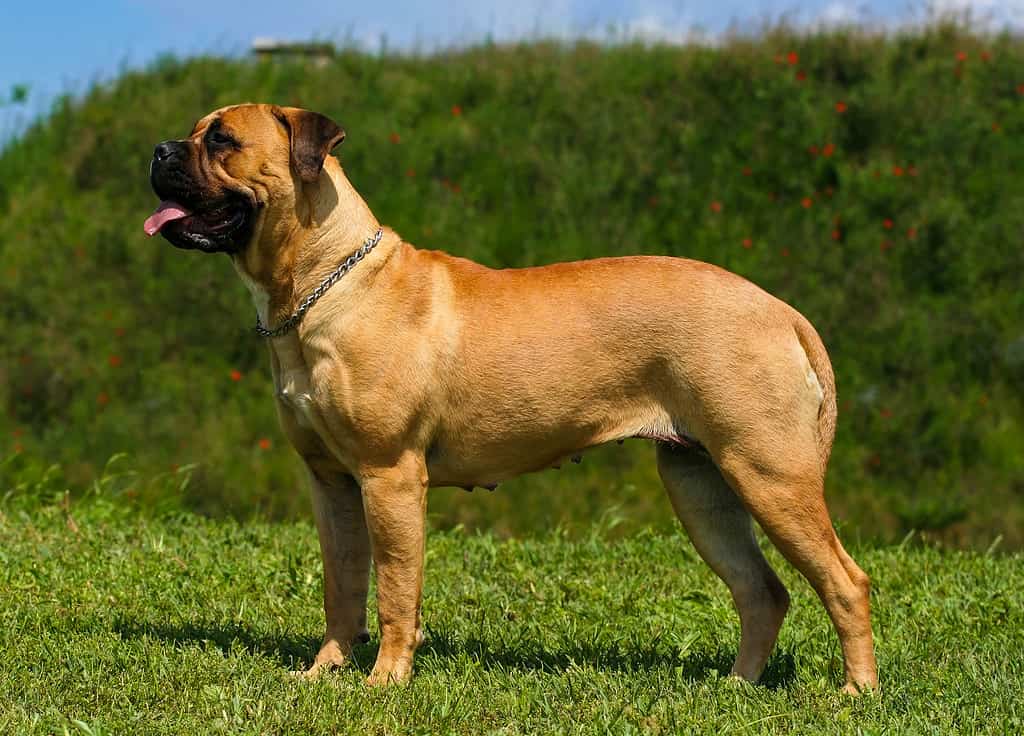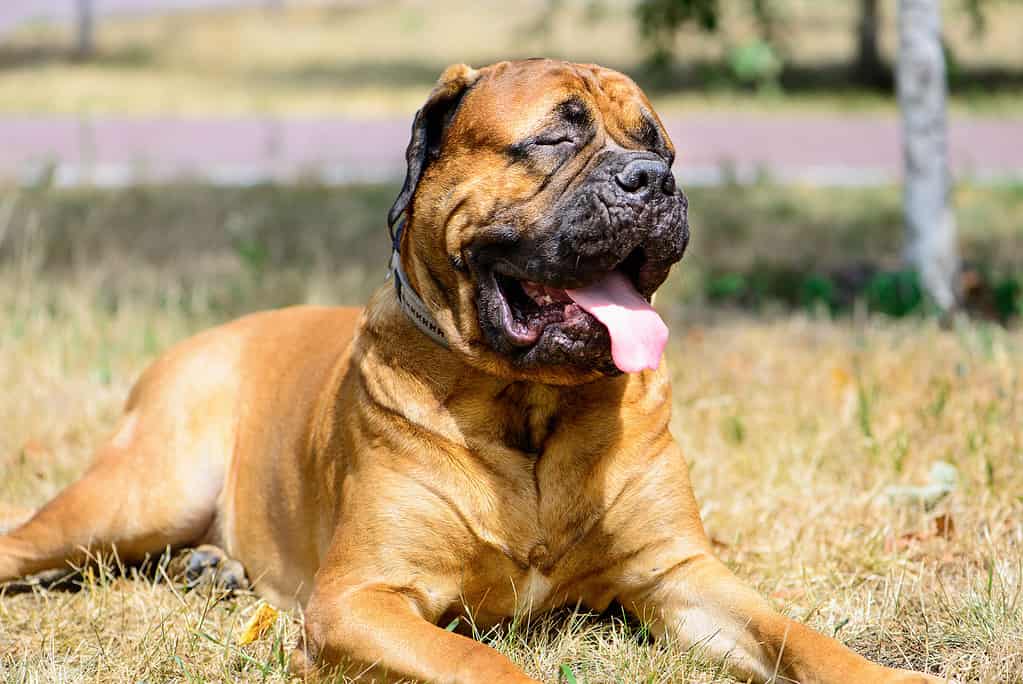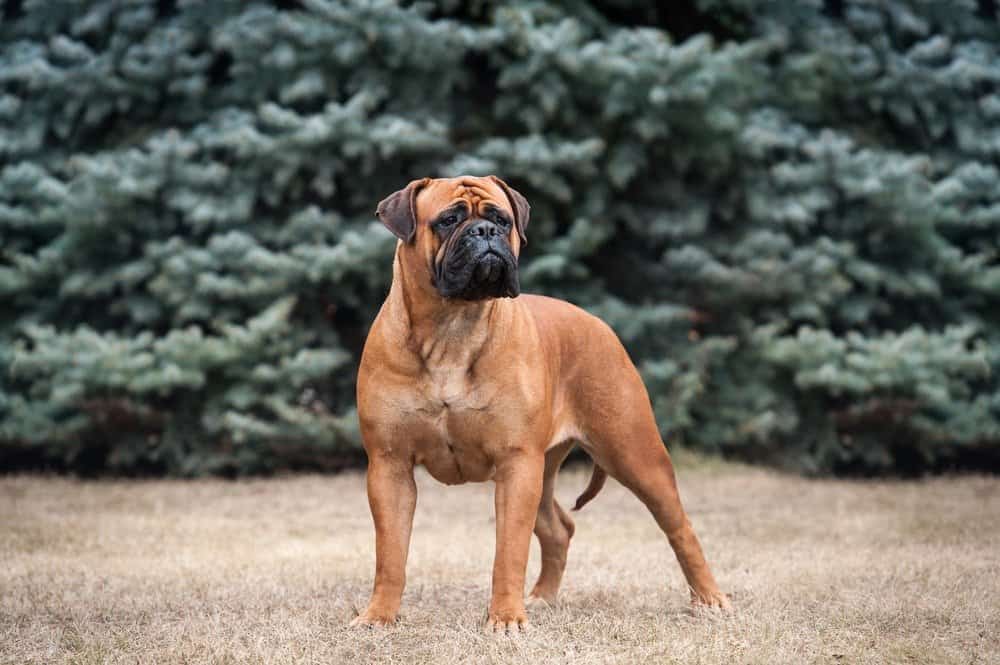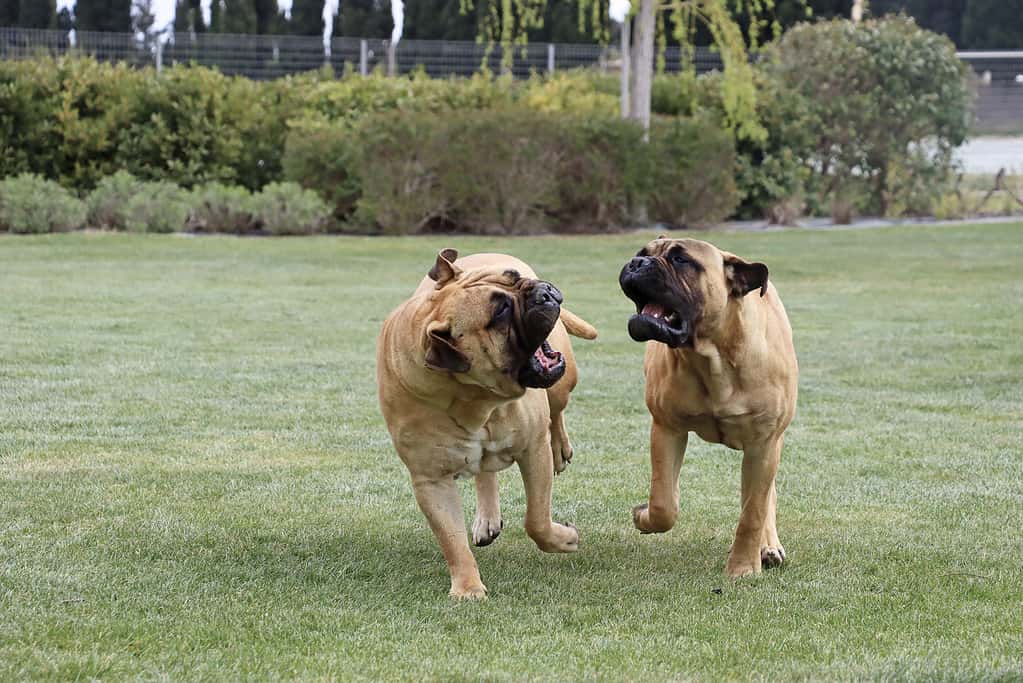The bullmastiff is undeniably one of the most impressive dog breeds alive today. Nineteenth-century English gamekeepers bred these large dogs to be protectors. The breed stems from a mix of 60 percent mastiff and 40 percent bulldog. Today, bullmastiffs are a popular choice for those who are looking for a reliable, friendly, and defensive companion. They exhibit all the qualities of a fantastic family dog, displaying gentleness, loyalty, and alertness. As prospective bullmastiff owners prepare to adopt their new family member, they may wonder: are female bullmastiffs distinct from males? Let’s explore four key differences between male and female bullmastiffs.
1. Height

Female bullmastiffs are slightly shorter than males.
©iStock.com/Wavetop
Bullmastiffs are sexually dimorphic, meaning that males and females are distinctly different in size or appearance. Males of this handsome breed are generally slightly taller than females. They grow to be 25 to 27 inches at the withers (shoulders), whereas females are 24 to 26 inches tall. The females are already huge dogs, and the males are even bigger!
2. Weight

Male bullmastiffs tend to weigh more than females.
©iStock.com/Astakhova
Reflecting the difference in height is a weight difference between the sexes. While a healthy bullmastiff adult male weighs around 110 to 130 pounds, a healthy adult female weighs only about 100 to 120 pounds. A roughly 10-pound difference in size may not seem significant, but it’s an important factor to consider if you are a prospective bullmastiff owner. Remember that a dog’s ideal daily food intake depends in part on its weight, and large dogs weighing over 100 pounds should be fed an additional one-third cup of food per day for every additional 10 pounds of body weight. This means that, on average, an adult male bullmastiff may eat nearly 2 1/2 more pounds of food per week than a female, about 10 more pounds of food per month, and, subsequently, about 122 more pounds of food per year. Regardless of the sex you choose to adopt, make sure that you are fully prepared for the costs that come with feeding a large dog.
3. Build

While they may exhibit slight differences in build, male and female bullmastiffs are difficult to distinguish by build alone.
©BORINA OLGA/Shutterstock.com
The bullmastiff is a big dog with a broad, square head and a compact, muscular body. Male and female bullmastiffs share this powerful appearance, and it may not always be easy to distinguish them based on build alone. However, the slightly smaller size of the female means that her build tends to be slightly more petite than her male counterpart. Don’t be fooled: a slightly smaller build makes female bullmastiffs no less intimidating in their appearance.
4. Temperament

The sex of your pet bullmastiff could play a big role in how aggressive or territorial they are, especially if you have other dogs in your home.
©Da Silva Emmanuelle/iStock via Getty Images
Like many other dog breeds, bullmastiffs display some temperament differences between sexes. Males tend to be more aggressively territorial and females generally display less dominance. Females may be more sociable with their owners, while males are more inclined to be playful. It’s important to remember that these are generalizations and that dogs have dynamic personalities that depend on many factors independent of their sex.
There are factors that make an enormous difference in the personality and temperament of your pet, regardless of its gender. Bullmastiffs are both confident and docile by nature. They are intelligent dogs, so training and socializing them at a young age is critical for both males and females alike. Some bullmastiff owners report that keeping more than one bullmastiff of the same sex can lead to excessive aggressiveness. However, these reports are anecdotal and are yet to be scientifically confirmed.
The photo featured at the top of this post is © cynoclub/iStock via Getty Images
Ready to discover the top 10 cutest dog breeds in the entire world?
How about the fastest dogs, the largest dogs and those that are -- quite frankly -- just the kindest dogs on the planet? Each day, AZ Animals sends out lists just like this to our thousands of email subscribers. And the best part? It's FREE. Join today by entering your email below.
Thank you for reading! Have some feedback for us? Contact the AZ Animals editorial team.







